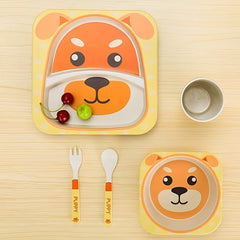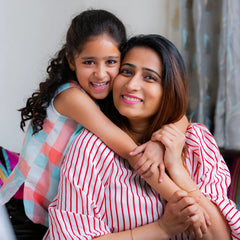Everything You Need to Know About Crawling in Babies
Eager to see your little one start crawling? Find out when babies reach the crawling milestone and what it means for their physical development. Before you know it, your kid will be crawling and making a go for it!
Whether you're pushing your baby in a stroller, toting her in a carrier, or holding her as she straddles your hip, her only means of transportation so far has been you and others. Soon, though, she'll learn how to crawl and will be able to make it from point A to point B on her own. "Crawling is a huge milestone for babies because it's the first step toward independent mobility,"

Getting around by herself gives your baby a great sense of power and accomplishment, which is a huge boost to her self-esteem. It also opens up her world to new discoveries and leads the way to more complex movements, such as pulling up to stand, walking, and eventually running. Here's more information about when babies begin to crawl, with tips for helping your child achieve solitary movement.
Crawling and Physical Development
Crawling is a tough job. It requires a baby to use both mind and body and it relies on gross motor, visual-spatial, and cognitive skills.
First, the muscles in your child's back, neck, shoulders, arms, and core must be strong enough to support her weight and help her maintain balance. Her vision also plays an important role. When babies crawl, they use what's known as binocular vision, relying on both eyes together to focus on one target. They go back and forth between looking off into the distance and looking at their hands, which helps build depth perception.
Your baby's mental muscles will get a workout as well. "Crawling babies develop navigation skills and memorize facts. "For instance, they'll learn that they have to go around the coffee table and beyond the recliner to get to the basket of toys,"
When Do Babies Start Crawling?
Babies typically begin to crawl between 6 and 10 months, although some may skip the crawling phase altogether and go straight to pulling up, cruising, and walking.
Help your baby get ready for his crawling debut by giving him lots of supervised tummy time. This allows him to lift his head to look around, which builds strength in the neck, shoulders, arms, and trunk. When he kicks his feet while on his tummy, it strengthens his hips and legs. Some babies don't like being on their tummy, so make it interesting. Place a favourite toy just out of his grasp, lie down in front of him to engage his attention, or place him tummy-side down on your chest and play with him.
You'll know your little guy is almost ready to crawl when he starts doing mini push-ups, lifting or propping himself up on his arms. From there, he'll learn to lift himself up on both arms and knees. Then he'll begin to rock forward and backward. Eventually he'll realize that if he pushes off with his knees, he can move on his own!

Types of Crawling Styles
When your baby starts to crawl, he might rely on one of these crawling styles.
- Classic crawl: Moving one arm and the opposite leg together at the same time to push forward
- Scoot: Dragging the bottom across the floor
- Crab crawl: Moving with one knee bent and the other extended, either forward or sideways
- Commando crawl: Lying flat on the tummy and using the arms to move forward
- Backward crawl: Moving in a backward direction while crawling
Fortunately, odd crawling methods usually don't mean anything is wrong. "The crucial thing is that the baby is engaged in self-locomotion,". Try getting down on all fours and showing him how classic crawling is done, and your baby may just pick up on the traditional technique.
How to Help Your Crawling Baby
Once your baby is in motion, expect her to explore anything and everything within her reach. Although you already did the whole baby-proofing thing, it's important to do a second, more thorough, round before she makes a move. If you don't have carpet, purchase a few non-slip rugs or colourful floor mats so your baby's little knees get a break from the hard surfaces. If your home has wood floors, make sure there aren't any uncovered nails or loose splinters that could hurt your baby.
As your cutie makes his way through the house, expect him to go through a range of emotions: excitement when he discovers something, disappointment if you remove it or take it away, and confusion or frustration when an obstacle blocks his path. You can look forward to engaging in a near-constant game of "follow the leader." Anywhere you go, he'll be right on your heels!
With more crawling practice, he'll begin to pick up the pace (and try to beat you the next time he spies a goodie) and he'll start climbing up and over things, like pillows, sofa cushions, and stairs. Always keep an eye on him, and put up a safety gate for the stairs.


















